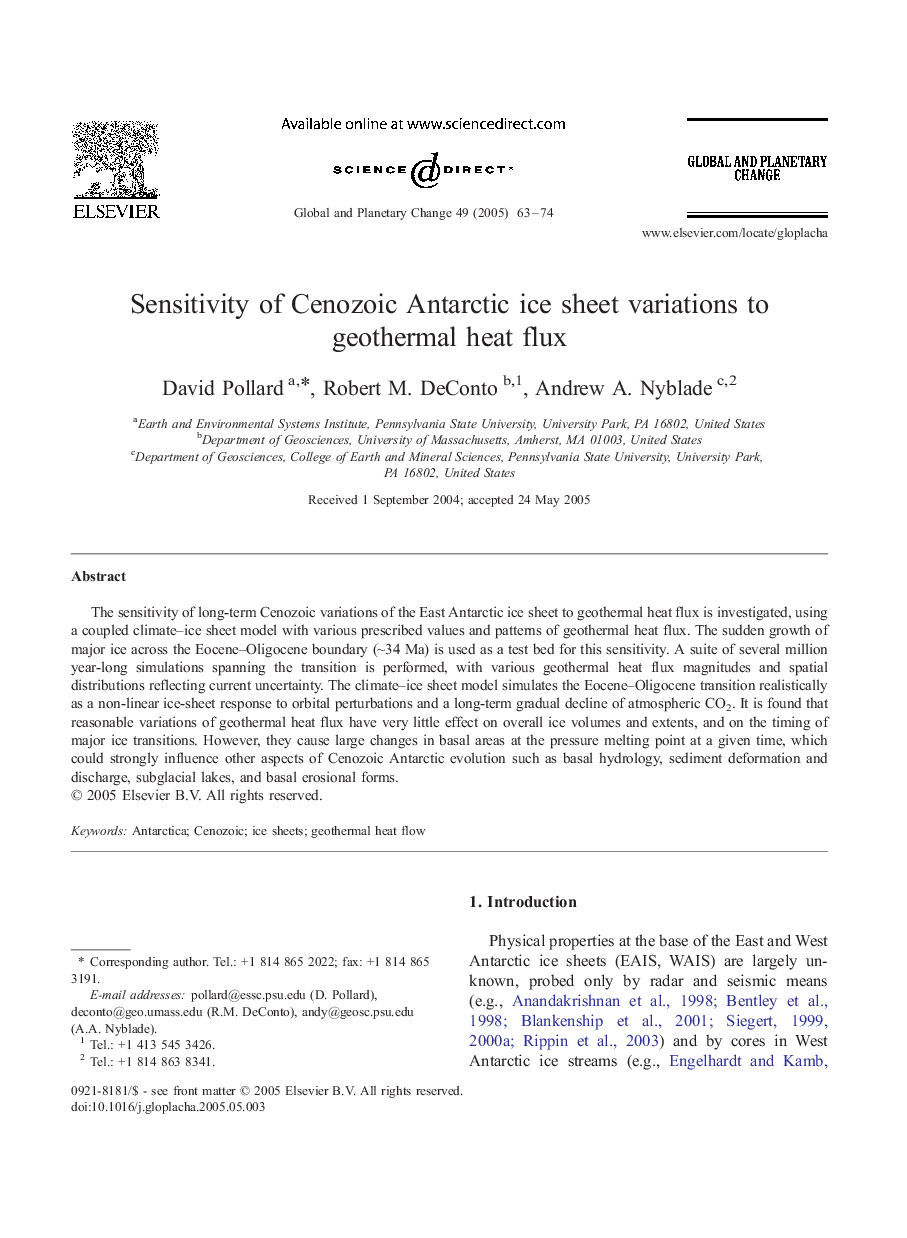| Article ID | Journal | Published Year | Pages | File Type |
|---|---|---|---|---|
| 9462495 | Global and Planetary Change | 2005 | 12 Pages |
Abstract
The sensitivity of long-term Cenozoic variations of the East Antarctic ice sheet to geothermal heat flux is investigated, using a coupled climate-ice sheet model with various prescribed values and patterns of geothermal heat flux. The sudden growth of major ice across the Eocene-Oligocene boundary (â¼34 Ma) is used as a test bed for this sensitivity. A suite of several million year-long simulations spanning the transition is performed, with various geothermal heat flux magnitudes and spatial distributions reflecting current uncertainty. The climate-ice sheet model simulates the Eocene-Oligocene transition realistically as a non-linear ice-sheet response to orbital perturbations and a long-term gradual decline of atmospheric CO2. It is found that reasonable variations of geothermal heat flux have very little effect on overall ice volumes and extents, and on the timing of major ice transitions. However, they cause large changes in basal areas at the pressure melting point at a given time, which could strongly influence other aspects of Cenozoic Antarctic evolution such as basal hydrology, sediment deformation and discharge, subglacial lakes, and basal erosional forms.
Keywords
Related Topics
Physical Sciences and Engineering
Earth and Planetary Sciences
Earth-Surface Processes
Authors
David Pollard, Robert M. DeConto, Andrew A. Nyblade,
